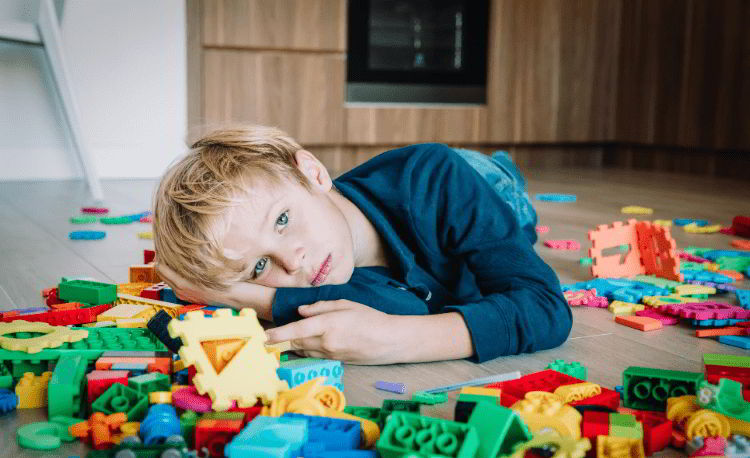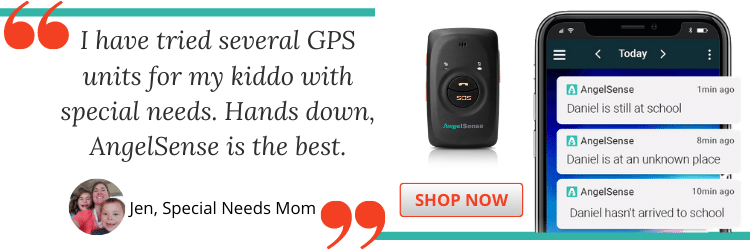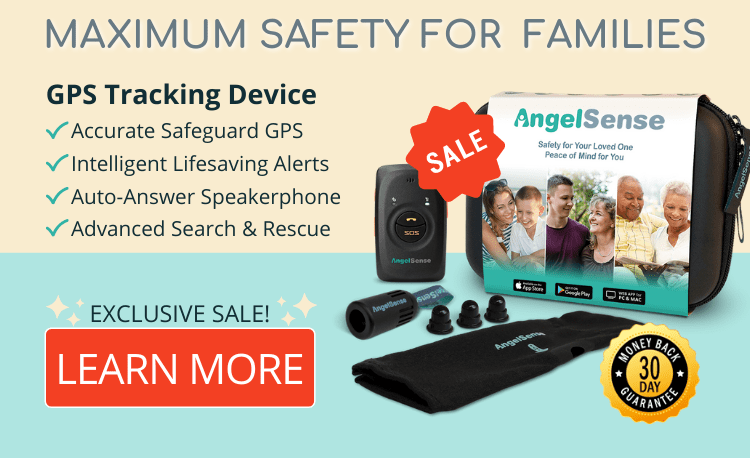How to Know if You Have a Sensory Disorder

Sensory Processing Disorder Symptoms
A mail by AngelSense, a GPS & vocalization monitoring solution designed for children with special needs.
Learn more than about how AngelSense's GPS tracking device can help improve your child'southward safety and well-existence.
Sensory Processing Disorder (SPD) is normally misunderstood and tends to be misdiagnosed as either autism or ADHD. And yet the reality is that SPD is believed to affect anywhere betwixt 5% to 15% of schoolhouse going children.
What makes this status particularly challenging to identity is that many children with autism besides take sensory processing difficulties. In fact some of the earliest academic studies on autism, including a 1943 study past Leo Kanner entitled Autistic Disturbances of Affective Contact , identified sensory hypersensitivity every bit a key symptom.
While in that location may be similarities, children with SPD experience the world in unique ways, and crave their own set of tools to cope with everyday life.
What is Sensory Processing Disorder?
SPD is a condition where sensory stimuli aren't interpreted properly past the brain and nervous system. Children with this condition tend to be either hypersensitive (oversensitive) or hyposensitive (under-responsive) to stimuli.
This can make the near common everyday experience like flushing a toilet or wearing certain types of wear overwhelming and unbearable.

What is SPD?
Unfortunately, many psychiatrists neglect to recognize sensory processing disorder equally a distinct condition as the symptoms tend to be quite various. This means information technology isn't seen every bit an official medical condition by many in the medical community, and hasn't been included as part of the "
Sensory processing disorder vs autism
The Institute for Sensory Processing Disorder describes SPD as a disorder which affects how the nervous organisation receives and responds to sensory stimuli. Considering the brain doesn't understand how to respond to stimuli, a kid is probable to over or nether-react. Many of these children have sensory processing difficulties without exhibiting whatever signs of autism. Autism, on the other hand, is seen to exist a
Interestingly, children with autism and SPD take been found to have measurable encephalon differences . Studies suggest that the brains of children with sensory processing disorder take decreased connectivity in regions responsible for sensory processing. While the brains of children with autism functioned differently in regions related to emotional development and memory.

Sensory Processing Disorder Activeness
Other noteworthy differences include the fact children with SPD have more than issues with touch than children with autism. Research has as well found that children with autism procedure sound differently to those with SPD which could help explicate why many struggle with linguistic communication.
Concerned your child may accept SPD? Hither are 10 symptoms of Sensory Processing Disorder that you lot need to look out for:
While SPD can exist difficult to diagnose, in that location are distinctive behaviors to be on the scout for. We've put together ten of the most common indicators of SPD, merely recommend yous use this as a guide only. If you lot're concerned that your child may take SPD, it's best to consult with a md or occupational therapist.
one. Hyper-astute hearing
Some children with SPD have the power to hear even the faintest sounds. For these children, auditory stimuli tin seem overwhelming or distracting. You may discover that your kid seems to be bothered by sounds that others simply don't notice.
2. Hypersensitive hearing
Sure everyday sounds are intolerable for children with SPD. This could include everything from the clanking of silverware at the dinner table to traffic. Children with SPD who are hypersensitive to these sounds will react with fear and may even take a meltdown.

3. Exhibit impact disfavor
It'south not uncommon for a child with SPD to pass up whatsoever form of concrete contact whether it's a hug or a handshake. These children tend to be fearful or surprised by touch, and are likely to avoid contact with people fifty-fifty if they know them. In improver, they may have an aversion to various forms of tactile input. For instance, they may not be able to tolerate existence barefoot on sand or grass, sure clothing textures, the air current blowing on their bare pare, and more.
iv. Poor motor coordination
Children with SPD often have poor motor coordination, making them clumsy, awkward, and more likely to lose their balance. These children often struggle learning fine motor tasks such as property a pencil.
five. No sense of boundaries
Your child may lack a sense of personal space when interacting with others. Not only are these children more likely to be in someone else'southward space, only they tend to touch everything effectually them. It's not uncommon to see a kid with SPD touching strangers.
AngelSense NewsletterSIGN UP
6. Loftier tolerance for hurting
Children with SPD may not detect or be indifferent when they hurt themselves. Often these children accept a delayed response when they practise get hurt.

Children with SPD – High tolerance for pain
7. Overly aggressive
You may notice that your child tends to exist overly aggressive when playing with others. Frequently these children aren't enlightened of their own strength and that they may be pain someone else. As a result, these children have a hard time making friends.

8. Easily distracted
Due to heightened sensory perception, these children are often easily distracted. Most will struggle to focus in classroom situations where they'll be fidgety and unable to sit down still for long periods of time. These children tend to prefer activities which involve motion such equally jumping or running.
nine. Impaired language development
Some children with SPD may struggle to empathize instructions and questions. They may confuse similar sounding words and tend to struggle enunciating clearly. Many likewise accept difficulty reading aloud.
10. Difficulty learning new things
Children with SPD tend to struggle learning new activities, and often take longer than other children to main the same activity. This tin can lead to mild developmental delays.
The signs of SPD vary greatly and aren't always easy to diagnose. There are, even so, sure behaviors that require attention and treatment. By diagnosing SPD early you lot can ensure your kid gets the necessary tools to lead a fulfilling life.
Safe Concerns of SPD and How AngelSense Can Help
Many children with sensory processing disorder tin become overwhelmed, anxious, and stressed. This tin can lead to them acting out and putting them in harm'south way. AngelSense GPS Tracker for Autism is an advanced safety device to go along children with special needs safe.

Wandering and sensory processing disorder
Wandering
To get abroad from stimuli that is overwhelming for them, children with autism and SPD will quickly run abroad with no alarm. They don't think about the danger or consequences as they flee whatsoever it is that's causing them discomfort. With AngelSense you'll go a notification equally before long as they elope and the lifesaving emergency tools ensure that you'll find them every bit quickly as possible. You tin can also call them using the assistive speakerphone on the device that answers automatically. This helps you lot to at-home them down, tell them to stop, talk to nearby people, listen-in to hear what'south going on around them, and give them directions.
Meltdowns
Meltdowns are oftentimes a upshot of sensory sensitivities. When your kid isn't with you lot a meltdown can be hard to manage. As their parent, you know the all-time ways to at-home and comfort your kid and AngelSense gives y'all the power to do that from anywhere at any time with the device's ii-way speakerphone. There is also an SOS Call Asking Button on the device that they can easily printing to let you know they need you lot when they are starting to feel anxious.
Hiding
Sometimes when a child with SPD gets overwhelmed they will notice a identify to hide. In fact, they can become hiding experts, making it extremely difficult to find them. The AngelSense GPS tracking device comes with a remote activated alarm that can be activated from any distance. It's loud plenty to be heard clearly and help you safely find your hiding kid.
Sensory Sensitive Wearing Options
AngelSense comes with a soft, durable wearing sleeve and fasteners that are non-removable. There are likewise optional wearing accessories that are all made peculiarly for those with sensory sensitivities like the belt and undershirt with a compression fit and no tags.

Source: https://www.angelsense.com/blog/10-signs-sensory-processing-disorder/
0 Response to "How to Know if You Have a Sensory Disorder"
Postar um comentário